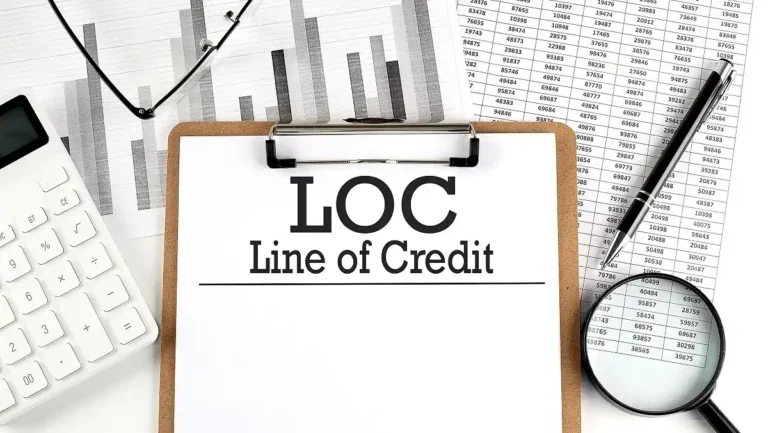This article assesses the impact of unsecured lines of credit (LOC) on small businesses. It explains why they use this form of financing, the risks, and how they can be managed.
Unsecured lines of credit for small businesses do not require any collateral, giving the small business flexible funding access. This option is outstanding for businesses that lack valuable collateral for obtaining funds. Unsecured lines of credit support cash flow management for small businesses when they need to cover short-term operational expenses and even allow companies to take advantage of growth initiatives.
Yet even so, there are risks that come with them. Also, the possibility of financial mismanagement can lead to spending the borrowed funds such that debt increases, and financial problems deepen.
These risks can be avoided, but only to an extent, if small businesses adhere to stringent financial management policies. Some include scrutinizing the use of funds, especially the cost of the credit facility, and having a good credit score.
Let’s examine the topic in more detail to better understand the impact of unsecured lines of credit.
Why do small businesses opt for unsecured lines of credit?
With unpredictable financial challenges, having quick access to money makes a significant difference. Here are a few reasons why many businesses choose LOCs over unsecured loans:
No collateral needed
Compared to traditional loans, LOCs do not require business owners to submit collateral such as property, assets, or equipment for security.
Easy access to funds
Term loans offer large amounts to business owners, while LOCs allow businesses to borrow only what is needed, which can provide flexibility in payment.
Build stronger business credit.
Regular and responsible use of LOCs can build a strong credit score, which improves one’s chances of qualifying for future financing options.
Provides security to seasonal businesses
Small businesses can fluctuate with the seasons; an unsecured line of credit provides funds to ensure a smooth flow.
Meeting cash flow gaps
Cash flow has always been a challenge for small businesses. Whether unexpected costs, payments, or other issues, LOCs ensure a smooth business flow by meeting financial obligations.
How do you manage cash flow and business growth?
Most businesses have unsecured lines of credit for bad credit due to bad management. Here’s what you can do:
Managing expenses
Unsecured lines of business can provide small business owners with a financial cushion to operate smoothly and cover daily expenses.
Emergency spending
When a business grows, quick financial decisions must be made—whether expanding space or inventory, etc. LOCs allow companies to act fast.
Technology investment
Modern business owners need to invest in technology to stay competitive. An unsecured line of credit can help cover the cost of new tools or machinery.
Potential risks of unsecured lines of credit
While LOCs offer many benefits, they also come with potential risks that one must be aware of:
Higher interest fees
One of the most significant risks of LOCs is the high interest cost. Since lenders have no assets to fall back on, they charge a high cost of borrowing.
Overborrowing
The ease of borrowing can be a double-edged sword, as business owners can rely heavily on borrowing and struggle with repayments.
Criteria
Business owners with a strong credit score history qualify easily, while those with a low credit score may face difficulty securing funds.
What are the ways to mitigate the risk?
Despite the risk, business owners can take cautious steps to use the unsecured line of credit responsibly:
Comparison of terms and lenders
Before making any final decisions, compare different lenders and find one that offers the best deal.
Wise usage
This type of credit should be used for necessary and not unnecessary spending.
Check and monitor cash flow
It’s advisable to track income and expenses regularly to help the business determine when to borrow and repay.
Pay on time
Paying on time is the best way to stay safe and risk the chance of getting high interest rates and a low credit score. Setting up automated payments is best to ensure they’re paid on time.
Build a strong credit score profile
The best way to improve business credit score is to make timely payments, maintain low credit, and reduce any outstanding debts.
Conclusion:
An unsecured line of credit is a safe cushion offering valuable financial tools for small business owners. However, with quick access to funds come risks, such as higher fee costs and stringent qualification criteria that might affect the business. Small business owners should follow clean practices, such as responsible borrowing, to mitigate these risks.
By learning how to take advantage of an unsecured line of credit, a small business owner can be assured of having the best financial support to thrive and grow the business in a competitive market.
Thus, before choosing, it is important to understand what is Line of credit and how does it work, business owners should cautiously examine their financial position and consult financial advisors. Accessing an unsecured line of credit can be a blessing and a boon, so use it wisely.
For more business insights, visit nextmagazine.co.uk—your guide to smart financial decisions in a competitive world.

